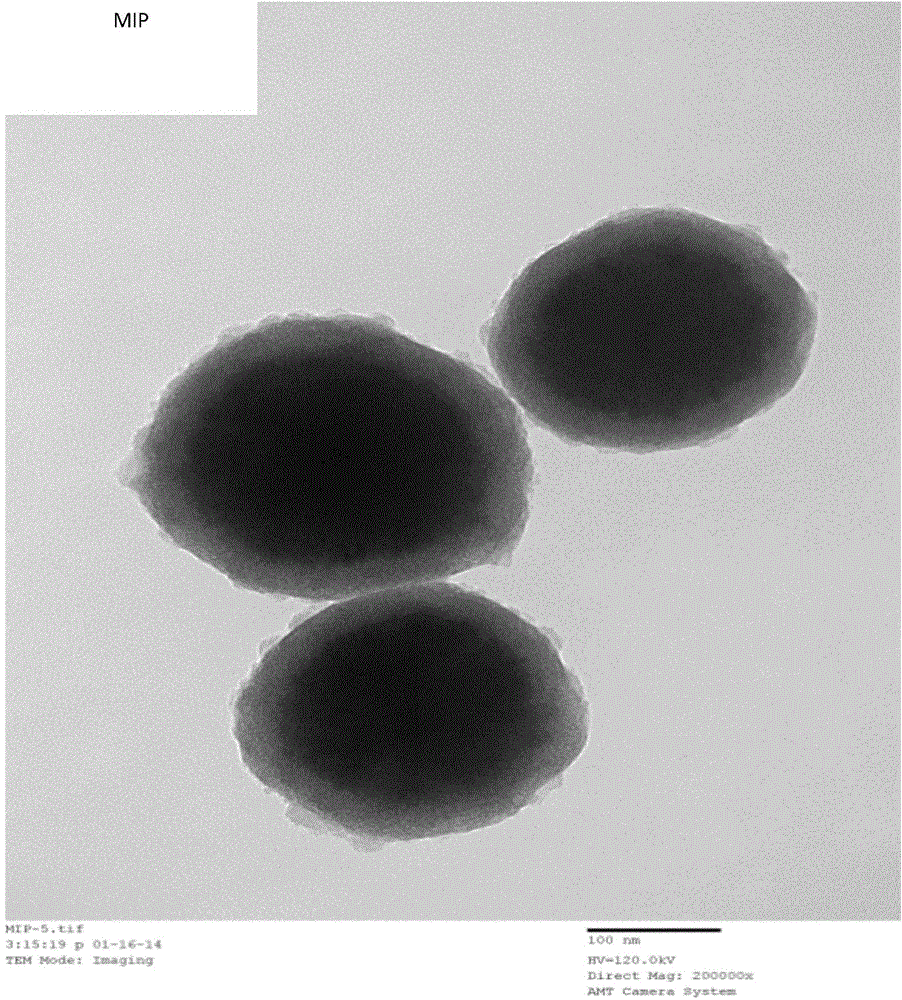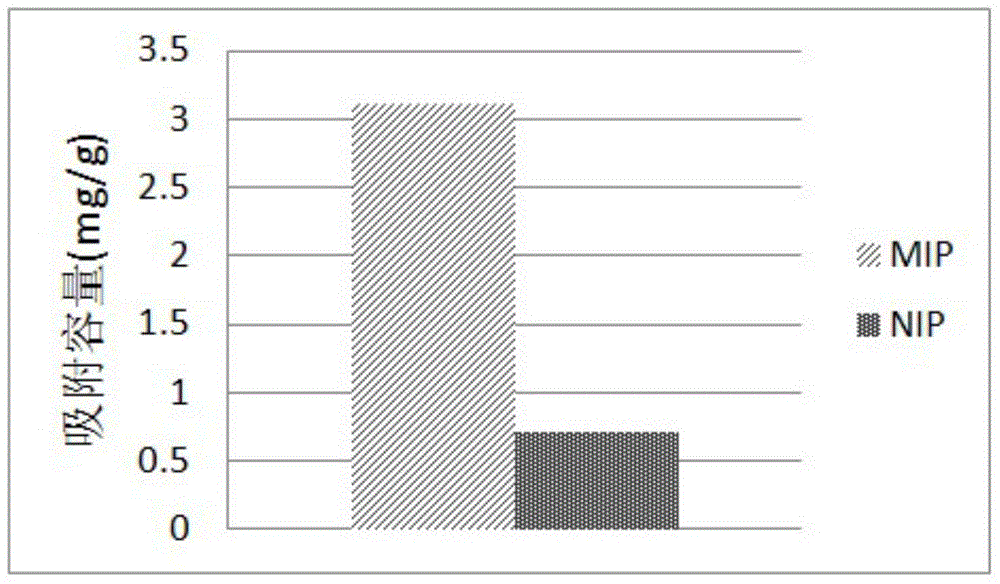Protein antigen determinant molecularly imprinted material as well as preparation and application thereof
An epitope and molecular imprinting technology, which is applied in the direction of material inspection products, other chemical processes, chemical instruments and methods, etc., can solve the problems of low template utilization rate, difficult removal of templates, and limitations on the application of epitope imprinting methods, and achieve Stable conformation, simple method, guaranteed versatility and universal applicability
- Summary
- Abstract
- Description
- Claims
- Application Information
AI Technical Summary
Problems solved by technology
Method used
Image
Examples
Embodiment 1
[0028] (1) Preparation of human serum albumin epitope imprinted microsphere material
[0029] Magnetic nanoparticles coated with silicon layer were prepared as matrix material by solvothermal method. Take 50 mg of matrix material, add 1ml of 0.5mg / ml human serum albumin template peptide (AASQAALGLHHHHHH) solution (Gill Biochemical Shanghai Co., Ltd.), incubate at 25°C to immobilize the template on the matrix surface (the mass ratio of the template to the matrix material is 10:1000). After washing the unfixed template peptides, resuspend the matrix in 25ml of water, add 15mg of dopamine (mass ratio of monomer to matrix material is 0.3:1), pre-assemble under mechanical stirring at 30°C for 30min, add 0.5ml of 1M tris-HCl buffer (pH8.0), self-polymerized for 5h under mechanical stirring, and cleaned unpolymerized dopamine monomers with the assistance of a magnet. Subsequently, the magnetic particles were repeatedly washed with 200 mM EDTA-Na to make Ni 2+ After elution, the te...
Embodiment 2
[0038] It is 40:1000 to carry out template immobilization by template and matrix material mass ratio, other can obtain MIP2 and NIP2 with embodiment 1, its adsorption capacity to human serum albumin epitope is as follows Figure 4 shown.
Embodiment 3
[0040] It is 2.5:1000 to carry out template immobilization by template and matrix material mass ratio, other can obtain MIP3 and NIP3 with embodiment 1, its adsorption capacity to human serum albumin epitope is as follows Figure 5 shown.
PUM
| Property | Measurement | Unit |
|---|---|---|
| Adsorption capacity | aaaaa | aaaaa |
| Adsorption capacity | aaaaa | aaaaa |
Abstract
Description
Claims
Application Information
 Login to View More
Login to View More - R&D
- Intellectual Property
- Life Sciences
- Materials
- Tech Scout
- Unparalleled Data Quality
- Higher Quality Content
- 60% Fewer Hallucinations
Browse by: Latest US Patents, China's latest patents, Technical Efficacy Thesaurus, Application Domain, Technology Topic, Popular Technical Reports.
© 2025 PatSnap. All rights reserved.Legal|Privacy policy|Modern Slavery Act Transparency Statement|Sitemap|About US| Contact US: help@patsnap.com



